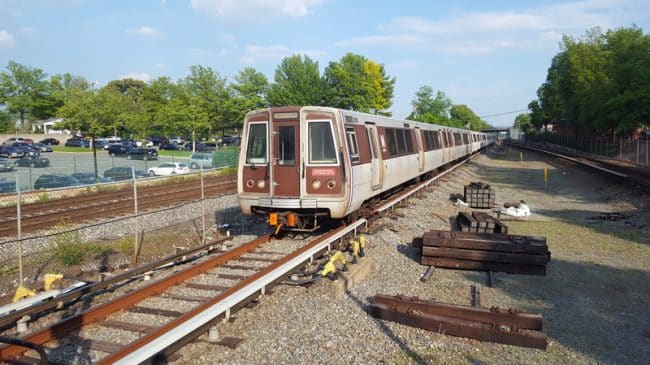The Washington Metropolitan Area Transportation Authority (WMATA) released its SafeTrack plan last week that involves closing parts of some lines for weeks at a time and single tracking other parts of the system. Last month the system shut down all of its rail lines for one day for safety reasons for the first time ever. WMATA is trying to catch up from years of neglect but better maintenance, while sorely needed, is no guarantee that the system will operate more reliably.
Riders encounter major delays on a regular basis. Let’s take the week starting April 23rd for an illustration of the misery. Saturday morning a metal part of a rail car struck the third rail causing a loud noise, a flash and smoke. After a delay of 10 minutes with smoke entering the cabin, the train was able to limp back to Tenleytown station where riders were evacuated. On Monday morning, a track problem caused single tracking on the Red Line. On Tuesday morning a separate track problem caused more single tracking. On Wednesday morning a 50-minute power outage left some commuters trapped in an elevator. Later Wednesday morning, a smoky electrical problem led firefighters to close the station. According to a passenger account, “You could see the fire in the distance and then the platform filled with smoke.” As I write this on Thursday morning, there have been no major meltdowns so far but the day is still young.
There is ongoing debate of whether any public transit agency is more challenging to run than WMATA. The likely answer is no. But the hardest job may not belong to CEO Paul Wiedefeld but tothe WMATA public relations folks who have to encourage folks to pay for an increasingly unreliable and dangerous product. Perhaps this week’s headline will be, “Red Line Operates Trouble Free on Sunday.”
WMATA’s ongoing meltdown has received a lot of coverage. The Washington Post has an excellent article highlighting how Metro ignored repeated warnings about system deterioration. Late last year, the Washingtonian chronicled the infuriating history of Metro ignoring problems. There are several reasons why Metro is in embarrassingly bad condition, but the biggest cause of the failing system is atrocious governance.
Poor urban transit governance is not unique to DC. Many major urban rail systems have had to deal with poor management, an intransigent workforce and a declining customer base. Further, the private sector could play a role in fixing the problem, if only the government would let it.
How would WMATA have been different if it had operated as a private entity largely free of politics? First, free from political constraints to do things fast instead of right, it would have made rational long-term capital decisions. It would have added a third and possibly fourth track to allow easier maintenance and enhanced rail service. It would not have single-tracked The Roslyn Tunnel forcing three different rail lines to share one track.
Second, the customers and the general manager would have operated the system, not the multitude of unions (18 the last time I checked) that currently control it. As one employee told the Washingtonian, Accountability for day-to-day repairs had all but vanished: “Consciously or subconsciously, everyone at Metro knows they’ve got a job for life,” he says, “unless they sit there and smoke crack in the middle of the platform.” Fights between different employee groups, a lack of standard operating procedures and train operators having to relieve themselves on the tracks because train dispatchers would not allow their trains to stop at a station would not happen. Many of Europe’s great transit systems are privately run or use public private partnerships and pay their workers more than their U.S. counterparts. Yet undertaking a simple change to work-hour rules is a political third rail to many U.S. Democrats. A general manager with power could spend money on repairs. He could terminate workers who don’t work well with others. He could make more structural changes in upper management. In the current system, the wolves are guarding the henhouse.
Third, a professional board would have overseen WMATA, not elected politicians. WMATA was conceived in the 1960’s and built in the 1970’s and 1980’s. While the system operated smoothly for the first 30 years, there were always problems beneath the surface. WMATA’s original plan expected the federal government to cover operation costs, despite the fact it provides no scheduled operations funding to any transit system in any other U.S. city. Maintenance costs were never considered. The board is governed by appointees from four different jurisdictions (D.C, Maryland, Virginia and the federal government). The only qualification for board members is that they use the system. Board members are reportedly much more interested in ribbon cuttings than maintenance, which is one reason why the Silver Line expansion took precedence over basic maintenance. Secretary of Transportation Anthony Foxx took a good first step by replacing three of the four federal government nominees with folks with strong transit backgrounds (although two of the folks leaving the board had strong backgrounds), but the other jurisdictions have to follow through as well.

